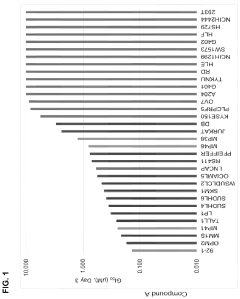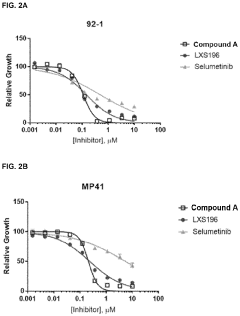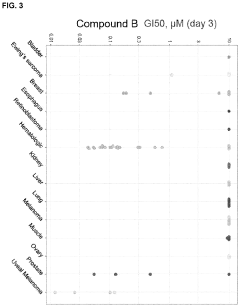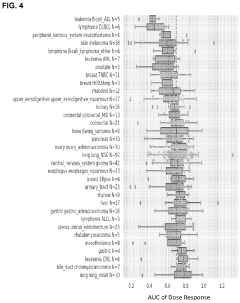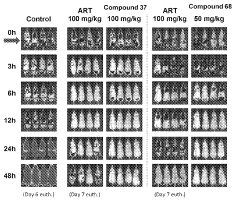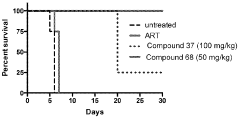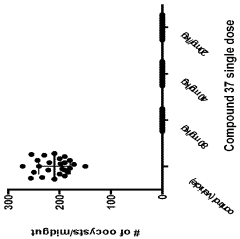Stability of Geometric Isomers in Supramolecular Assemblies
AUG 1, 20259 MIN READ
Generate Your Research Report Instantly with AI Agent
Patsnap Eureka helps you evaluate technical feasibility & market potential.
Isomer Stability Goals
The stability of geometric isomers in supramolecular assemblies is a critical aspect of molecular engineering and materials science. The primary goal is to enhance the stability and control the interconversion of these isomers within complex supramolecular structures. This objective is driven by the need to create more robust and functional materials for various applications, including drug delivery, sensing, and responsive materials.
One key aim is to develop methods for selectively stabilizing specific geometric isomers within supramolecular assemblies. This involves designing and synthesizing molecular components that can form strong and directional non-covalent interactions, such as hydrogen bonding, π-π stacking, and metal-ligand coordination. By carefully tuning these interactions, researchers seek to create energy barriers that prevent or slow down the interconversion between different isomeric forms.
Another important goal is to understand and predict the factors that influence isomer stability in supramolecular environments. This includes investigating the effects of temperature, pH, solvent polarity, and external stimuli on the equilibrium between different geometric isomers. Such knowledge is crucial for designing systems that can maintain their desired configuration under various conditions or respond predictably to environmental changes.
Researchers also aim to develop techniques for real-time monitoring and control of isomer stability in supramolecular assemblies. This involves the integration of spectroscopic methods, such as NMR, UV-Vis, and circular dichroism, with advanced imaging techniques to observe isomeric transitions at the molecular level. The ultimate goal is to achieve dynamic control over isomer stability, allowing for the creation of switchable and adaptive supramolecular materials.
Furthermore, there is a growing interest in harnessing the unique properties of geometric isomers to create functional supramolecular systems. This includes developing materials that can undergo reversible structural changes in response to external stimuli, leading to applications in molecular machines, smart materials, and responsive drug delivery systems. The stability and controlled interconversion of geometric isomers are crucial for realizing these advanced applications.
Lastly, researchers are working towards improving the computational models and simulation techniques used to predict and design stable geometric isomers in supramolecular assemblies. This involves developing more accurate force fields and molecular dynamics simulations that can account for the complex interplay of non-covalent interactions in these systems. The goal is to enable rational design of supramolecular assemblies with precisely controlled isomer stability and functionality.
One key aim is to develop methods for selectively stabilizing specific geometric isomers within supramolecular assemblies. This involves designing and synthesizing molecular components that can form strong and directional non-covalent interactions, such as hydrogen bonding, π-π stacking, and metal-ligand coordination. By carefully tuning these interactions, researchers seek to create energy barriers that prevent or slow down the interconversion between different isomeric forms.
Another important goal is to understand and predict the factors that influence isomer stability in supramolecular environments. This includes investigating the effects of temperature, pH, solvent polarity, and external stimuli on the equilibrium between different geometric isomers. Such knowledge is crucial for designing systems that can maintain their desired configuration under various conditions or respond predictably to environmental changes.
Researchers also aim to develop techniques for real-time monitoring and control of isomer stability in supramolecular assemblies. This involves the integration of spectroscopic methods, such as NMR, UV-Vis, and circular dichroism, with advanced imaging techniques to observe isomeric transitions at the molecular level. The ultimate goal is to achieve dynamic control over isomer stability, allowing for the creation of switchable and adaptive supramolecular materials.
Furthermore, there is a growing interest in harnessing the unique properties of geometric isomers to create functional supramolecular systems. This includes developing materials that can undergo reversible structural changes in response to external stimuli, leading to applications in molecular machines, smart materials, and responsive drug delivery systems. The stability and controlled interconversion of geometric isomers are crucial for realizing these advanced applications.
Lastly, researchers are working towards improving the computational models and simulation techniques used to predict and design stable geometric isomers in supramolecular assemblies. This involves developing more accurate force fields and molecular dynamics simulations that can account for the complex interplay of non-covalent interactions in these systems. The goal is to enable rational design of supramolecular assemblies with precisely controlled isomer stability and functionality.
Market Demand Analysis
The market demand for stable geometric isomers in supramolecular assemblies has been steadily growing across various industries, driven by their unique properties and potential applications. In the pharmaceutical sector, these assemblies offer promising avenues for drug delivery systems, enabling controlled release and targeted therapy. The ability to manipulate and stabilize specific isomeric forms within supramolecular structures has opened up new possibilities for enhancing drug efficacy and reducing side effects.
In the field of materials science, the demand for stable geometric isomers in supramolecular assemblies is fueled by their potential in developing smart materials with tunable properties. Industries such as electronics, aerospace, and automotive are particularly interested in these assemblies for their applications in sensors, actuators, and responsive materials. The market for such advanced materials is expected to expand significantly in the coming years, as manufacturers seek innovative solutions to improve product performance and sustainability.
The energy sector has also shown increasing interest in stable geometric isomers within supramolecular assemblies. Their potential applications in energy storage and conversion technologies, such as advanced batteries and solar cells, have attracted substantial research and development investments. As the global push for renewable energy sources intensifies, the demand for these specialized assemblies is likely to surge.
In the realm of nanotechnology, stable geometric isomers in supramolecular assemblies play a crucial role in developing novel nanodevices and nanostructures. This has implications for various industries, including healthcare, environmental monitoring, and information technology. The ability to precisely control the geometry and stability of these assemblies at the nanoscale opens up possibilities for creating highly efficient and miniaturized systems.
The cosmetics and personal care industry has begun exploring the potential of stable geometric isomers in supramolecular assemblies for developing advanced skincare and beauty products. These assemblies offer opportunities for improved ingredient delivery, enhanced product stability, and novel textures, addressing consumer demands for more effective and innovative formulations.
As research in this field progresses, the market demand is expected to expand into new areas, such as food technology, water treatment, and advanced manufacturing processes. The versatility and adaptability of stable geometric isomers in supramolecular assemblies make them attractive for a wide range of applications, driving continued investment and market growth across multiple sectors.
In the field of materials science, the demand for stable geometric isomers in supramolecular assemblies is fueled by their potential in developing smart materials with tunable properties. Industries such as electronics, aerospace, and automotive are particularly interested in these assemblies for their applications in sensors, actuators, and responsive materials. The market for such advanced materials is expected to expand significantly in the coming years, as manufacturers seek innovative solutions to improve product performance and sustainability.
The energy sector has also shown increasing interest in stable geometric isomers within supramolecular assemblies. Their potential applications in energy storage and conversion technologies, such as advanced batteries and solar cells, have attracted substantial research and development investments. As the global push for renewable energy sources intensifies, the demand for these specialized assemblies is likely to surge.
In the realm of nanotechnology, stable geometric isomers in supramolecular assemblies play a crucial role in developing novel nanodevices and nanostructures. This has implications for various industries, including healthcare, environmental monitoring, and information technology. The ability to precisely control the geometry and stability of these assemblies at the nanoscale opens up possibilities for creating highly efficient and miniaturized systems.
The cosmetics and personal care industry has begun exploring the potential of stable geometric isomers in supramolecular assemblies for developing advanced skincare and beauty products. These assemblies offer opportunities for improved ingredient delivery, enhanced product stability, and novel textures, addressing consumer demands for more effective and innovative formulations.
As research in this field progresses, the market demand is expected to expand into new areas, such as food technology, water treatment, and advanced manufacturing processes. The versatility and adaptability of stable geometric isomers in supramolecular assemblies make them attractive for a wide range of applications, driving continued investment and market growth across multiple sectors.
Current Challenges
The stability of geometric isomers in supramolecular assemblies presents several significant challenges that researchers and industry professionals are currently grappling with. One of the primary obstacles is the inherent thermodynamic instability of certain geometric isomers. These isomers often have a tendency to interconvert or rearrange into more stable configurations, particularly when subjected to external stimuli such as heat, light, or chemical environments. This instability can lead to unpredictable behavior in supramolecular systems, potentially compromising the intended functionality of the assemblies.
Another major challenge lies in the precise control and maintenance of specific geometric configurations within complex supramolecular structures. The dynamic nature of non-covalent interactions, which are fundamental to supramolecular chemistry, can make it difficult to lock isomers into desired orientations. This is particularly problematic in applications that require long-term stability or consistent performance over time, such as in drug delivery systems or molecular machines.
The influence of the surrounding environment on isomer stability poses yet another hurdle. Factors such as solvent polarity, pH, and the presence of other molecules can significantly affect the stability and behavior of geometric isomers within supramolecular assemblies. This sensitivity to environmental conditions makes it challenging to design robust systems that can maintain their structural integrity and function across a range of operating conditions.
Furthermore, the characterization and monitoring of geometric isomers within complex supramolecular structures present technical difficulties. Current analytical techniques may not always provide sufficient resolution or real-time information on the isomeric state of components within larger assemblies. This limitation hampers the ability to fully understand and control the dynamic processes occurring within these systems.
The scalability of stable geometric isomer-based supramolecular assemblies is also a significant challenge. While many promising systems have been demonstrated at the laboratory scale, translating these into larger, industrially relevant quantities while maintaining isomeric stability and assembly integrity remains problematic. This scaling issue is particularly acute for applications in materials science and nanotechnology.
Lastly, the design of supramolecular systems that can selectively stabilize specific geometric isomers while allowing for controlled interconversion when desired is an ongoing challenge. Achieving this level of control would enable the development of more sophisticated and responsive supramolecular technologies, but it requires a delicate balance between stability and switchability that is difficult to achieve with current design strategies and materials.
Another major challenge lies in the precise control and maintenance of specific geometric configurations within complex supramolecular structures. The dynamic nature of non-covalent interactions, which are fundamental to supramolecular chemistry, can make it difficult to lock isomers into desired orientations. This is particularly problematic in applications that require long-term stability or consistent performance over time, such as in drug delivery systems or molecular machines.
The influence of the surrounding environment on isomer stability poses yet another hurdle. Factors such as solvent polarity, pH, and the presence of other molecules can significantly affect the stability and behavior of geometric isomers within supramolecular assemblies. This sensitivity to environmental conditions makes it challenging to design robust systems that can maintain their structural integrity and function across a range of operating conditions.
Furthermore, the characterization and monitoring of geometric isomers within complex supramolecular structures present technical difficulties. Current analytical techniques may not always provide sufficient resolution or real-time information on the isomeric state of components within larger assemblies. This limitation hampers the ability to fully understand and control the dynamic processes occurring within these systems.
The scalability of stable geometric isomer-based supramolecular assemblies is also a significant challenge. While many promising systems have been demonstrated at the laboratory scale, translating these into larger, industrially relevant quantities while maintaining isomeric stability and assembly integrity remains problematic. This scaling issue is particularly acute for applications in materials science and nanotechnology.
Lastly, the design of supramolecular systems that can selectively stabilize specific geometric isomers while allowing for controlled interconversion when desired is an ongoing challenge. Achieving this level of control would enable the development of more sophisticated and responsive supramolecular technologies, but it requires a delicate balance between stability and switchability that is difficult to achieve with current design strategies and materials.
Existing Stabilization
01 Structural factors affecting geometric isomer stability
The stability of geometric isomers is influenced by various structural factors, including bond angles, steric hindrance, and electronic effects. These factors can determine which isomer is more thermodynamically stable. Understanding these structural aspects is crucial for predicting and controlling isomer stability in chemical processes and product development.- Structural factors affecting geometric isomer stability: The stability of geometric isomers is influenced by various structural factors, including bond angles, steric hindrance, and electronic effects. These factors can determine which isomer is more thermodynamically stable. Understanding these structural influences is crucial for predicting and controlling isomer stability in chemical processes and product development.
- Isomerization processes and catalysts: Catalysts and specific reaction conditions can be employed to control the isomerization of geometric isomers. This includes the use of metal complexes, acids, or bases to facilitate the conversion between cis and trans isomers. The choice of catalyst and reaction parameters can significantly affect the equilibrium and kinetics of isomerization, allowing for the selective production of desired isomers.
- Analytical methods for isomer characterization: Various analytical techniques are used to characterize and quantify geometric isomers. These methods include spectroscopic techniques such as NMR, IR, and UV-Vis spectroscopy, as well as chromatographic methods like HPLC and GC. Advanced computational methods can also be employed to predict and analyze isomer stability and interconversion.
- Applications of geometric isomer stability in pharmaceuticals: The stability of geometric isomers plays a crucial role in pharmaceutical development. Different isomers can exhibit varying biological activities, pharmacokinetics, and therapeutic effects. Understanding and controlling isomer stability is essential for drug design, formulation, and regulatory compliance in the pharmaceutical industry.
- Environmental factors affecting isomer stability: Environmental conditions such as temperature, pressure, pH, and solvent effects can significantly impact the stability and interconversion of geometric isomers. These factors can influence the energy barriers between isomers and affect their relative populations in equilibrium. Understanding these environmental influences is important for predicting isomer behavior in various applications and natural systems.
02 Isomerization processes and catalysts
Catalysts and specific reaction conditions can be employed to control the isomerization process between geometric isomers. This includes the use of metal complexes, acids, or bases to facilitate the conversion between cis and trans isomers. The choice of catalyst and reaction parameters can significantly affect the equilibrium and kinetics of isomerization.Expand Specific Solutions03 Analytical methods for determining isomer stability
Various analytical techniques are used to assess the stability of geometric isomers. These may include spectroscopic methods such as NMR and IR spectroscopy, as well as chromatographic techniques. Advanced computational methods can also be employed to predict and compare the relative stabilities of different geometric isomers.Expand Specific Solutions04 Applications of geometric isomer stability in pharmaceuticals
The stability of geometric isomers plays a crucial role in pharmaceutical development. Different isomers can exhibit varying biological activities, solubilities, and pharmacokinetic properties. Understanding and controlling isomer stability is essential for drug efficacy, safety, and formulation strategies in the pharmaceutical industry.Expand Specific Solutions05 Environmental factors affecting geometric isomer stability
External factors such as temperature, pressure, pH, and solvent effects can significantly influence the stability of geometric isomers. These environmental conditions can alter the energy landscape of the isomers, potentially leading to interconversion or preferential stabilization of one form over another. Consideration of these factors is important in various chemical processes and storage conditions.Expand Specific Solutions
Key Industry Players
The field of geometric isomer stability in supramolecular assemblies is in a nascent stage of development, characterized by growing research interest and emerging applications. The market size is relatively small but expanding, driven by potential applications in drug delivery, materials science, and nanotechnology. Technologically, the field is still evolving, with varying levels of maturity across different aspects. Key players like Case Western Reserve University and The University of Hong Kong are leading academic research, while companies such as Arecor Ltd. and Kyowa Kirin Co., Ltd. are exploring commercial applications. Pfizer Inc. and DuPont de Nemours, Inc. are leveraging their extensive R&D capabilities to advance the field, potentially accelerating technological progress and market growth in the coming years.
Pfizer Inc.
Technical Solution: Pfizer has developed advanced supramolecular assemblies for drug delivery, focusing on the stability of geometric isomers. Their approach involves using cyclodextrin-based nanostructures to encapsulate and stabilize drug molecules[1]. These assemblies are designed to enhance the bioavailability and controlled release of pharmaceuticals. Pfizer's research has shown that by carefully controlling the geometry of the supramolecular structures, they can significantly improve the stability of geometric isomers, particularly for compounds prone to isomerization[2]. Their technology utilizes specific binding interactions and steric constraints within the nanostructures to maintain the desired isomeric form throughout the drug delivery process[3].
Strengths: Improved drug stability and bioavailability, controlled release capabilities. Weaknesses: Complexity in manufacturing, potential for unexpected drug-excipient interactions.
DuPont de Nemours, Inc.
Technical Solution: DuPont has pioneered the development of supramolecular assemblies for industrial applications, with a focus on maintaining the stability of geometric isomers in polymer systems. Their approach involves the creation of self-assembling block copolymers that form stable nanostructures[4]. These assemblies are designed to preserve specific geometric configurations of functional molecules, enhancing the performance of materials in various applications. DuPont's research has demonstrated that by incorporating specific molecular recognition elements into the polymer chains, they can create supramolecular architectures that selectively stabilize desired isomeric forms[5]. This technology has been particularly successful in developing advanced coatings and membranes with improved chemical resistance and separation properties[6].
Strengths: Versatile applications in materials science, enhanced material properties. Weaknesses: High production costs, limited scalability for some complex assemblies.
Core Isomer Research
Compounds and uses thereof
PatentPendingUS20230145003A1
Innovation
- Development of specific compounds that modulate the BAF complex by inhibiting BRG1 and/or BRM activity, which can be used alone or in combination with other pharmaceutically active agents to treat disorders like cancer.
Compounds and methods for the treatment of malaria
PatentInactiveIN202118043692A
Innovation
- Development of specific compounds, such as those represented by Formula I and listed in Table 1, which offer new structural features and functional groups to target malaria parasites effectively, including those resistant to existing drugs.
Computational Modeling
Computational modeling plays a crucial role in understanding and predicting the stability of geometric isomers in supramolecular assemblies. These advanced simulation techniques provide valuable insights into the complex interactions and dynamics that govern the behavior of these systems at the molecular level.
Molecular dynamics (MD) simulations have emerged as a powerful tool for investigating the stability of geometric isomers in supramolecular assemblies. By employing force fields that accurately represent the interatomic interactions, MD simulations can reveal the time-dependent evolution of these systems, including conformational changes and isomerization processes. This approach allows researchers to observe the stability of different geometric isomers under various environmental conditions and identify factors that influence their relative stability.
Quantum mechanical (QM) calculations, particularly density functional theory (DFT) methods, offer complementary insights into the electronic structure and energetics of geometric isomers. These calculations can provide accurate estimates of the relative energies of different isomers, helping to elucidate the thermodynamic stability of various configurations within supramolecular assemblies. Additionally, QM methods can be used to investigate transition states and reaction pathways, shedding light on the kinetics of isomerization processes.
Hybrid quantum mechanics/molecular mechanics (QM/MM) approaches have gained popularity in recent years for studying geometric isomers in supramolecular assemblies. This method combines the accuracy of QM calculations for critical regions with the computational efficiency of MM simulations for the surrounding environment. QM/MM simulations are particularly useful for investigating the influence of the supramolecular environment on the stability and behavior of geometric isomers.
Machine learning (ML) techniques are increasingly being applied to enhance the efficiency and accuracy of computational modeling in this field. ML algorithms can be trained on large datasets of molecular structures and properties to predict the stability of geometric isomers in complex supramolecular systems. These methods offer the potential for rapid screening of novel isomeric configurations and can guide experimental efforts in the design of stable supramolecular assemblies.
Coarse-grained modeling approaches provide a means to simulate larger-scale supramolecular assemblies over extended time scales. By simplifying the representation of molecular structures, these methods enable the investigation of collective behavior and long-range interactions that influence the stability of geometric isomers within complex assemblies. Coarse-grained models can be particularly useful for studying the impact of assembly size and morphology on isomer stability.
The integration of these computational techniques with experimental data is essential for validating and refining theoretical models. By combining computational predictions with experimental observations, researchers can develop a more comprehensive understanding of the factors that govern the stability of geometric isomers in supramolecular assemblies. This synergistic approach accelerates the development of novel materials and applications based on controlled isomerization in supramolecular systems.
Molecular dynamics (MD) simulations have emerged as a powerful tool for investigating the stability of geometric isomers in supramolecular assemblies. By employing force fields that accurately represent the interatomic interactions, MD simulations can reveal the time-dependent evolution of these systems, including conformational changes and isomerization processes. This approach allows researchers to observe the stability of different geometric isomers under various environmental conditions and identify factors that influence their relative stability.
Quantum mechanical (QM) calculations, particularly density functional theory (DFT) methods, offer complementary insights into the electronic structure and energetics of geometric isomers. These calculations can provide accurate estimates of the relative energies of different isomers, helping to elucidate the thermodynamic stability of various configurations within supramolecular assemblies. Additionally, QM methods can be used to investigate transition states and reaction pathways, shedding light on the kinetics of isomerization processes.
Hybrid quantum mechanics/molecular mechanics (QM/MM) approaches have gained popularity in recent years for studying geometric isomers in supramolecular assemblies. This method combines the accuracy of QM calculations for critical regions with the computational efficiency of MM simulations for the surrounding environment. QM/MM simulations are particularly useful for investigating the influence of the supramolecular environment on the stability and behavior of geometric isomers.
Machine learning (ML) techniques are increasingly being applied to enhance the efficiency and accuracy of computational modeling in this field. ML algorithms can be trained on large datasets of molecular structures and properties to predict the stability of geometric isomers in complex supramolecular systems. These methods offer the potential for rapid screening of novel isomeric configurations and can guide experimental efforts in the design of stable supramolecular assemblies.
Coarse-grained modeling approaches provide a means to simulate larger-scale supramolecular assemblies over extended time scales. By simplifying the representation of molecular structures, these methods enable the investigation of collective behavior and long-range interactions that influence the stability of geometric isomers within complex assemblies. Coarse-grained models can be particularly useful for studying the impact of assembly size and morphology on isomer stability.
The integration of these computational techniques with experimental data is essential for validating and refining theoretical models. By combining computational predictions with experimental observations, researchers can develop a more comprehensive understanding of the factors that govern the stability of geometric isomers in supramolecular assemblies. This synergistic approach accelerates the development of novel materials and applications based on controlled isomerization in supramolecular systems.
Environmental Factors
Environmental factors play a crucial role in determining the stability of geometric isomers within supramolecular assemblies. These factors can significantly influence the structural integrity, dynamic behavior, and overall performance of the assembled systems. Temperature is one of the most critical environmental parameters affecting isomer stability. Higher temperatures generally increase molecular motion and can lead to enhanced isomerization rates, potentially destabilizing specific geometric configurations within the assembly.
pH is another vital factor that can impact the stability of geometric isomers in supramolecular structures. Changes in pH can alter the protonation state of functional groups, affecting intermolecular interactions and potentially triggering conformational changes or isomerization processes. This is particularly relevant for assemblies containing pH-sensitive components or those relying on hydrogen bonding for structural integrity.
Solvent composition and polarity can dramatically influence the stability of geometric isomers in supramolecular systems. Different solvents can promote or inhibit specific isomeric forms by altering the strength of non-covalent interactions that hold the assembly together. For instance, polar solvents may stabilize charged or polar isomers, while non-polar solvents might favor hydrophobic interactions and stabilize different geometric configurations.
Light exposure is another environmental factor that can significantly impact isomer stability, especially for photosensitive compounds. Certain wavelengths of light can trigger photoisomerization processes, leading to changes in the geometric configuration of molecules within the assembly. This phenomenon can be either detrimental to stability or exploited for creating responsive supramolecular systems.
Pressure changes can also affect the stability of geometric isomers in supramolecular assemblies, particularly in systems with significant void spaces or those involving gases. High pressures may favor more compact isomeric forms, while low pressures could stabilize expanded configurations or promote the incorporation of gaseous components into the assembly.
The presence of specific ions or small molecules in the environment can have a profound effect on isomer stability. These species can act as catalysts for isomerization processes, stabilize particular geometric forms through coordination or electrostatic interactions, or disrupt the assembly by competing for binding sites.
Mechanical stress is an often-overlooked environmental factor that can influence the stability of geometric isomers in supramolecular systems. Shear forces, compression, or tension applied to the assembly can induce conformational changes or promote isomerization, particularly in materials designed for mechanical responsiveness or those subjected to processing conditions.
Understanding and controlling these environmental factors is crucial for designing robust and functional supramolecular assemblies based on geometric isomers. By carefully manipulating these parameters, researchers can optimize the stability of desired isomeric forms, create responsive materials, or develop systems with tunable properties for various applications in fields such as materials science, nanotechnology, and biomedicine.
pH is another vital factor that can impact the stability of geometric isomers in supramolecular structures. Changes in pH can alter the protonation state of functional groups, affecting intermolecular interactions and potentially triggering conformational changes or isomerization processes. This is particularly relevant for assemblies containing pH-sensitive components or those relying on hydrogen bonding for structural integrity.
Solvent composition and polarity can dramatically influence the stability of geometric isomers in supramolecular systems. Different solvents can promote or inhibit specific isomeric forms by altering the strength of non-covalent interactions that hold the assembly together. For instance, polar solvents may stabilize charged or polar isomers, while non-polar solvents might favor hydrophobic interactions and stabilize different geometric configurations.
Light exposure is another environmental factor that can significantly impact isomer stability, especially for photosensitive compounds. Certain wavelengths of light can trigger photoisomerization processes, leading to changes in the geometric configuration of molecules within the assembly. This phenomenon can be either detrimental to stability or exploited for creating responsive supramolecular systems.
Pressure changes can also affect the stability of geometric isomers in supramolecular assemblies, particularly in systems with significant void spaces or those involving gases. High pressures may favor more compact isomeric forms, while low pressures could stabilize expanded configurations or promote the incorporation of gaseous components into the assembly.
The presence of specific ions or small molecules in the environment can have a profound effect on isomer stability. These species can act as catalysts for isomerization processes, stabilize particular geometric forms through coordination or electrostatic interactions, or disrupt the assembly by competing for binding sites.
Mechanical stress is an often-overlooked environmental factor that can influence the stability of geometric isomers in supramolecular systems. Shear forces, compression, or tension applied to the assembly can induce conformational changes or promote isomerization, particularly in materials designed for mechanical responsiveness or those subjected to processing conditions.
Understanding and controlling these environmental factors is crucial for designing robust and functional supramolecular assemblies based on geometric isomers. By carefully manipulating these parameters, researchers can optimize the stability of desired isomeric forms, create responsive materials, or develop systems with tunable properties for various applications in fields such as materials science, nanotechnology, and biomedicine.
Unlock deeper insights with Patsnap Eureka Quick Research — get a full tech report to explore trends and direct your research. Try now!
Generate Your Research Report Instantly with AI Agent
Supercharge your innovation with Patsnap Eureka AI Agent Platform!
